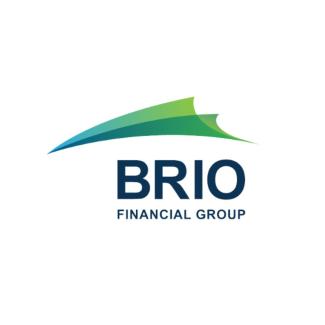
When Investment Risk Goes from Friend to Foe
by Brandon Miller on Nov 23, 2022
When Investment Risk Goes from Friend to Foe
Presented by Brio Financial Group
There’s a National Geographic show about people who take whatever sport they do to the extreme and get caught in life-or-death situations. That might be kayaking through crocodile-infested waters, climbing a frozen falls, kite skiing the Northwest Passage, or any number of other wild feats that test the limits of human endurance. In the kite-skiing episode, a brother and sister were stalked by polar bears when they had to camp for the night. I don’t know about you, but that experience would make me mighty reluctant to strap on skis or camp ever again.
Obviously, we all have different levels of comfort with risk. And like so many other things in life, there is no right or wrong way to deal with it, just what’s right for you.
If you’re going to invest, risk is inherent. As I’ve written before, a smart asset allocation strategy is one of the best ways to help balance the market’s highs and lows. But that doesn’t mean that you won’t still suffer losses.
Assessing how comfortable you are with your portfolio hemorrhaging money at times is an important part of investing because it helps dictate the type of investments that might be appropriate for you. The industry uses three pretty self-explanatory levels for measuring risk—aggressive, moderate, and conservative—plus ranges within each level. An aggressive investor is generally willing to risk more money for the possibility of a better return whereas a conservative investor may seek investments with guaranteed returns.
So, how do you define your personal risk level? A quick online search offers many useful tools to assess your tolerance. The issue with these is that they rely on self-reporting and sometimes it’s hard to be self-aware. It’s easy to think you’re a moderately aggressive investor when stocks are on a winning streak. But what happens when the market tanks? How do you feel about your investments then?
My advice is to use those online tools as a guide, but pay more attention to your gut—especially how you feel during downturns. Your reaction to the wild swings the market has been undergoing these past few months is a great starting place.
It’s important to acknowledge that losing money is always painful. In fact, research shows that losses loom larger than gains, perhaps by twice as much.1 This helps explain why watching your balance go from $1 million to $1.5, only to fall back to $1.3 feels like a $200,000 loss, not a $300,000 gain.
The question then is how do you internalize those losses? When you open your statement and see your account balances have plunged, do you pick your jaw up off the desk and continue with your day? Or does that loss consume your thinking to the point of distraction?
If uncertainty leaves you uneasy, you might want to seek out some lower-risk investments. The upside of recent rate hikes is that they have made several conservative instruments more attractive. Remember, conservative investments are not bad, they just offer a different path to get you to your goals. Rounding out your portfolio with some less-than-sexy investments—CDs, high-yield savings accounts, and fixed or indexed annuities—could help bring down your overall risk profile. If trading out crypto for CDs helps you sleep better at night, then it may be well worth the sacrifice of potential return.
As far as when to act on any new strategy, I would suggest making plans now for how you want to shift your asset allocation, but wait to implement it until the market recovers. History shows us that is likely to happen now that the mid-term elections are over.2
Remember too, that your tolerance levels will probably change over time due to age, time horizons for needing the money, political or natural events that reshape your thinking or circumstances, and regulatory changes. In general, as you age, you want to take on less risk because there’s less time to replace losses.
Of course, you might be someone who thrills to kite-skiing in polar bear country and will embrace greater investment risk throughout your life. Hey, we’re all different. Best to find an investment strategy with a risk level that makes you feel confident, not apprehensive.
1Source: Kahneman, Daniel; Tversky, Amos (1979. Prospect Theory: An Analysis of Decision under Risk
https://tinyurl.com/2p8jkju6
2Source: CFRA, S&P Global. Past performance is not guarantee of future results. Data as of 6/30/22.
Brio does not provide tax or legal advice, and nothing contained in these materials should be taken as such. The opinions expressed in this article are for general informational purposes only and are not intended to provide specific advice or recommendations for any individual or on any specific security. It is only intended to provide education about the financial industry. To determine which investments may be appropriate for you, consult your financial advisor prior to investing. Any past performance discussed during this program is no guarantee of future results. Any indices referenced for comparison are unmanaged and cannot be invested into directly. As always please remember investing involves risk and possible loss of principal capital; please seek advice from a licensed professional.
Brio Financial Group is a registered investment adviser. SEC Registration does not constitute an endorsement of Brio by the SEC nor does it indicate that Brio has attained a particular level of skill or ability. Advisory services are only offered to clients or prospective clients where Brio Financial Group and its representatives are properly licensed or exempt from licensure. No advice may be rendered by Brio Financial Group unless a client service agreement is in place.
Brandon Miller, CFP®, is a financial consultant at Brio Financial Group in San Francisco, specializing in helping LGBT individuals and families plan and achieve their financial goals.
